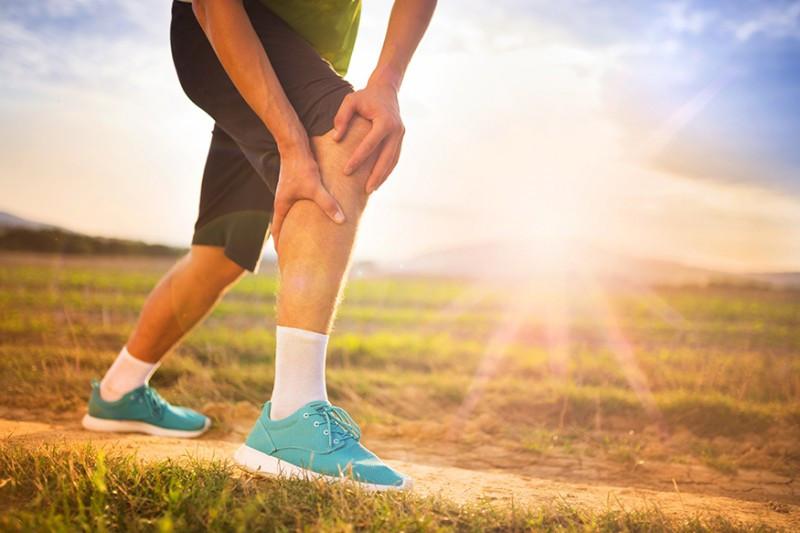Many runners are familiar with it, as are some walkers (at least those who walk far and fast for exercise) and serious weight lifters (lots of strenuous bending at the elbows and knees), as well as anyone else who has had to deal with osteoarthritis or rheumatoid arthritis. We can add to the list aging folks who simply have creaky joints. We're talking, of course, about joint pain. And when it comes to pain as it relates to our joints, glucosamine typically enters the discussion. Glucosamine is a natural chemical compound in our bodies that supports the health of the cartilage, which is the malleable, rubber-like tissue that cushions bones at the joints, per webmd.com. As we age, the amount of available glucosamine starts to drop, affecting the joint by leading to gradual breakdown, which is a source of the joint pain that can make physical movement more of a chore the older we get. Some studies have shown some success in terms of glucosamine providing relief for mild to moderate knee osteoarthritis, and experts believe it might also be helpful for reducing pain in some other joints as well.
Glucosamine Supplementation
Glucosamine products come from the shells of shellfish; note, there aren't any natural food sources of glucosamine. Most of these supplements are made from the substance chitin, which is found in the hard outer shells of shrimp, lobsters, and crabs, per umm.com. Alternative forms of glucosamine are available to anyone with a shellfish allergy. There are actually several forms of glucosamine as a supplement, to include glucosamine sulfate, glucosamine hydrochloride, and N-acetyl glucosamine, per mayoclinic.org. They are not believed to be interchangeable, and the most commonly used version is glucosamine sulfate. Those suffering with joint pain from osteoarthritis and seeking supplementation are encouraged to ingest glucosamine sulfate orally to counteract the effects of the inflammation, breakdown, and eventual loss of cartilage linked to osteoarthritis. Research suggests that such pain relief linked to osteoarthritis and provided by glucosamine sulfate might be as effective for the hip or spine as it is for the knee. Other possible benefits include the enhancement of function in the hip or knee for osteoarthritis sufferers and the reduction of swelling and stiffness, per umm.edu, with such relief from osteoarthritis symptoms lasting up to three months after the end of treatment. As for rheumatoid arthritis, studies point to glucosamine hydrochloride as a supplement that appears to be capable of reducing such pain, at least when compared to an inactive placebo. Regardless which type of arthritis you have, and therefore which type of glucosamine supplement is the right choice, you should always discuss such supplementation with your personal physician first so as to avoid any possible issues or misuse. Beware, though – while glucosamine supplementation can slow the progression of arthritis, it is not a cure. As for those runners we opened this article with, relief from osteoarthritis might be available for them: doses of up to 3,000 milligrams of glucosamine sulfate might be able to slow joint degradation, per examine.com, which is good news for athletes participating in high-impact sports - like running.Other Joint Pain Remedies
Here's a quick run-through of other substances and compounds believed to be of assistance in reducing the pain and other effects of joint stress:- Vitamin C/Orange juice. Vitamin C and other antioxidants have been pegged via research as effective in reducing chances of developing osteoarthritis.
- Omega-3 fatty acids. These can supposedly cut down on joint pain and reduce inflammation.
- Low-fat milk. Fat-free milk, too. A Boston study of women found such milk able to slow the development of osteoarthritis in the knees.
- Wine. A study in Europe found that adults who drank four to six glasses a week were less likely to get osteoarthritis in the knee.
- Virgin olive oil. One of virgin olive oil's compounds might reduce the levels of inflammatory enzymes in the body.
- Calcium and Vitamin D. They are known to work in tandem in supporting strong bones. Calcium is the key component of bones, and vitamin D assists our bones' absorption of calcium.
- Fruits and vegetables. Hard to go wrong here. Work toward an assortment of colors, say, soybeans, cherries, broccoli, oranges (again) and garlic. Cauliflower also gets a mention on some lists.

